Highly Loaded and Dispersed Ni2P/Al2O3 Catalyst with High Selectivity for Hydrogenation of Acetophenone
Abstract
:1. Introduction
2. Results and Discussion
2.1. Textural and Structural Properties of the Fresh Catalysts
2.2. Surface Properties of the Fresh Catalysts
2.3. The Properties of the Used Catalysts
2.4. Catalytic Results
3. Materials and Methods
3.1. Catalyst Preparation
3.2. Catalyst Characterization
3.3. Catalytic Tests
4. Conclusions
Author Contributions
Funding
Acknowledgments
Conflicts of Interest
References
- Finlayson, B.A.; Biegler, L.T.; Grossmann, I.E. Ullmann’s Encyclopedia of Industrial Chemistry; Wiley-VCH: Weinheim, Germany, 2006. [Google Scholar]
- Casagrande, M.; Storaro, L.; Talon, A.; Lenarda, M.; Frattini, R.; Rodríguez-Castellón, E.; Maireles-Torres, P. Liquid phase acetophenone hydrogenation on Ru/Cr/B catalysts supported on silica. J. Mol. Catal. A 2002, 188, 133–139. [Google Scholar] [CrossRef]
- Červený, L.; Bělohlav, Z.; Hamed, M.N.H. Catalytic hydrogenation of aromatic aldehydes and ketones over ruthenium catalysts. Res. Chem. Intermed. 1996, 22, 15–22. [Google Scholar] [CrossRef]
- Aramendia, M.A.; Borau, V.; Gomez, J.F.; Herrera, A.; Jimenez, C.; Marinas, J.M. Reduction of acetophenones over Pd/AlPO4 catalysts. Linear free energy relationship (LFER). J. Catal. 1993, 140, 335–343. [Google Scholar] [CrossRef]
- Drelinkiewicza, A.; Waksmundzka, A.; Makowski, W.; Sobczak, J.W.; Król, A.; Zieba, A. Acetophenone hydrogenation on polymer-palladium catalysts: The effect of polymer matrix. Catal. Lett. 2004, 94, 143–156. [Google Scholar] [CrossRef]
- Santori, G.F.; Moglioni, A.G.; Vetere, V.; Iglesias, G.Y.M.; Casella, M.L.; Ferretti, O.A. Hydrogenation of aromatic ketones with Pt- and Sn-modified Pt catalysts. Appl. Catal. A Gen. 2004, 269, 215–223. [Google Scholar] [CrossRef]
- Chen, C.-S.; Chen, H.-W.; Cheng, W.-H. Study of selective hydrogenation of acetophenone on Pt/SiO2. Appl. Catal. A Gen. 2003, 248, 117–128. [Google Scholar] [CrossRef]
- Zaccheria, F.; Ravasio, N.; Psaro, R.; Fusi, A. Heterogeneous selective catalytic hydrogenation of aryl ketones to alcohols without additives. Tetrahedron Lett. 2005, 46, 3695–3697. [Google Scholar] [CrossRef]
- Bertero, N.M.; Apesteguía, C.R.; Marchi, A.J. Catalytic and kinetic study of the liquid-phase hydrogenation of acetophenone over Cu/SiO2 catalyst. Appl. Catal. A Gen. 2008, 349, 100–109. [Google Scholar] [CrossRef]
- Bertero, N.M.; Apesteguía, C.R.; Marchi, A.J. One-pot synthesis of olefins from aromatic ketones via tandem consecutive hydrogenation–dehydration reactions. Catal. Today 2011, 172, 171–176. [Google Scholar] [CrossRef]
- Trasarti, A.F.; Bertero, N.M.; Apesteguía, C.R.; Marchi, A.J. Liquid-phase hydrogenation of acetophenone over silica-supported Ni, Co and Cu catalysts: Influence of metal and solvent. Appl. Catal. A Gen. 2014, 475, 282–291. [Google Scholar] [CrossRef]
- Rajashekharam, M.V.; Bergault, I.; Fouilloux, P.; Schweich, D.; Delmas, H.; Chaudhari, R.V. Hydrogenation of acetophenone using a 10% Ni supported on zeolite Y catalyst: Kinetics and reaction mechanism. Catal. Today 1999, 48, 83–92. [Google Scholar] [CrossRef]
- Malyala, R.V.; Rode, C.V.; Arai, M.; Hegde, S.G.; Chaudhari, R.V. Activity, selectivity and stability of Ni and bimetallic Ni-Pt supported on zeolite Y catalysts for hydrogenation of acetophenone and its substituted derivatives. Appl. Catal A Gen. 2000, 193, 71–86. [Google Scholar] [CrossRef]
- Bertero, N.M.; Trasarti, A.F.; Apesteguía, C.R.; Marchi, A.J. Solvent effect in the liquid-phase hydrogenation of acetophenone over Ni/SiO2: A comprehensive study of the phenomenon. Appl. Catal. A Gen. 2011, 394, 228–238. [Google Scholar] [CrossRef]
- Dolly, C.C.; Analía, L.S.; Gina, P.; José Fernando, B.; Sergio Gustavo, M.; Virginia, V. Preparation and characterization of a supported system of Ni2P/Ni12P5 nanoparticles and their use as the active phase in chemoselective hydrogenation of acetophenone. Nanotechnology 2018, 29, 215702. [Google Scholar]
- Wang, J.; Chen, H.; Fu, Y.; Shen, J. Highly active Ni2P/SiO2 catalysts phosphorized by triphenylphosphine in liquid phase for the hydrotreating reactions. Appl. Catal. B Environ. 2014, 160–161, 344–355. [Google Scholar] [CrossRef]
- Wang, J.; Fu, Y.; Chen, H.; Shen, J. Effect of supports on the supported Ni2P catalysts prepared by the phosphidation using triphenylphosphine in liquid phase. Chem. Eng. J. 2015, 275, 89–101. [Google Scholar] [CrossRef]
- Huang, Y.J.; Schwarz, J.A.; Diehl, J.R.; Baltrus, J.P. Effect of catalyst preparation on catalytic activity: V. Chemical structures on nickel/alumina catalysts. Appl. Catal. 1988, 36, 163–175. [Google Scholar] [CrossRef]
- Briggs, D.; Seah, M.P. Practical Surface Analysis: By Auger and X-ray Photoelectron Spectroscopy; Wiley: Hoboken, NJ, USA, 1983. [Google Scholar]
- Cecilia, J.A.; Infantes-Molina, A.; Rodriguez-Castellon, E.; Jimenez-Lopez, A. A novel method for preparing an active nickel phosphide catalyst for HDS of dibenzothiophene. J. Catal. 2009, 263, 4–15. [Google Scholar] [CrossRef]
- Sawhill, S.J.; Layman, K.A.; Van Wyk, D.R.; Engelhard, M.H.; Wang, C.; Bussell, M.E. Thiophene hydrodesulfurization over nickel phosphide catalysts: Effect of the precursor composition and support. J. Catal. 2005, 231, 300–313. [Google Scholar] [CrossRef]
- Prins, R.; Bussell, M.E. Metal phosphides: Preparation, characterization and catalytic reactivity. Catal. Lett. 2012, 142, 1413–1436. [Google Scholar] [CrossRef]
- Xue, M.; Hu, S.; Chen, H.; Fu, Y.; Shen, J. Preparation of highly loaded and dispersed Ni/SiO2 catalysts. Catal. Commun. 2011, 12, 332–336. [Google Scholar] [CrossRef]
- Oyama, S.T.; Lee, Y.-K. The active site of nickel phosphide catalysts for the hydrodesulfurization of 4,6-DMDBT. J. Catal. 2008, 258, 393–400. [Google Scholar] [CrossRef]
- Jun, R.E.N.; Wang, J.G.; Li, J.F.; Li, Y.W. Density functional theory study on crystal nickel phosphides. J. Fuel Chem. Technol. 2007, 35, 458–464. [Google Scholar]
- Yates, J.T., Jr.; Garland, C.W. Infrared studies of carbon monoxide chemisorbed on nickel and on mercury-poisoned nickel surfaces. J. Phys. Chem. 1961, 65, 617–624. [Google Scholar] [CrossRef]
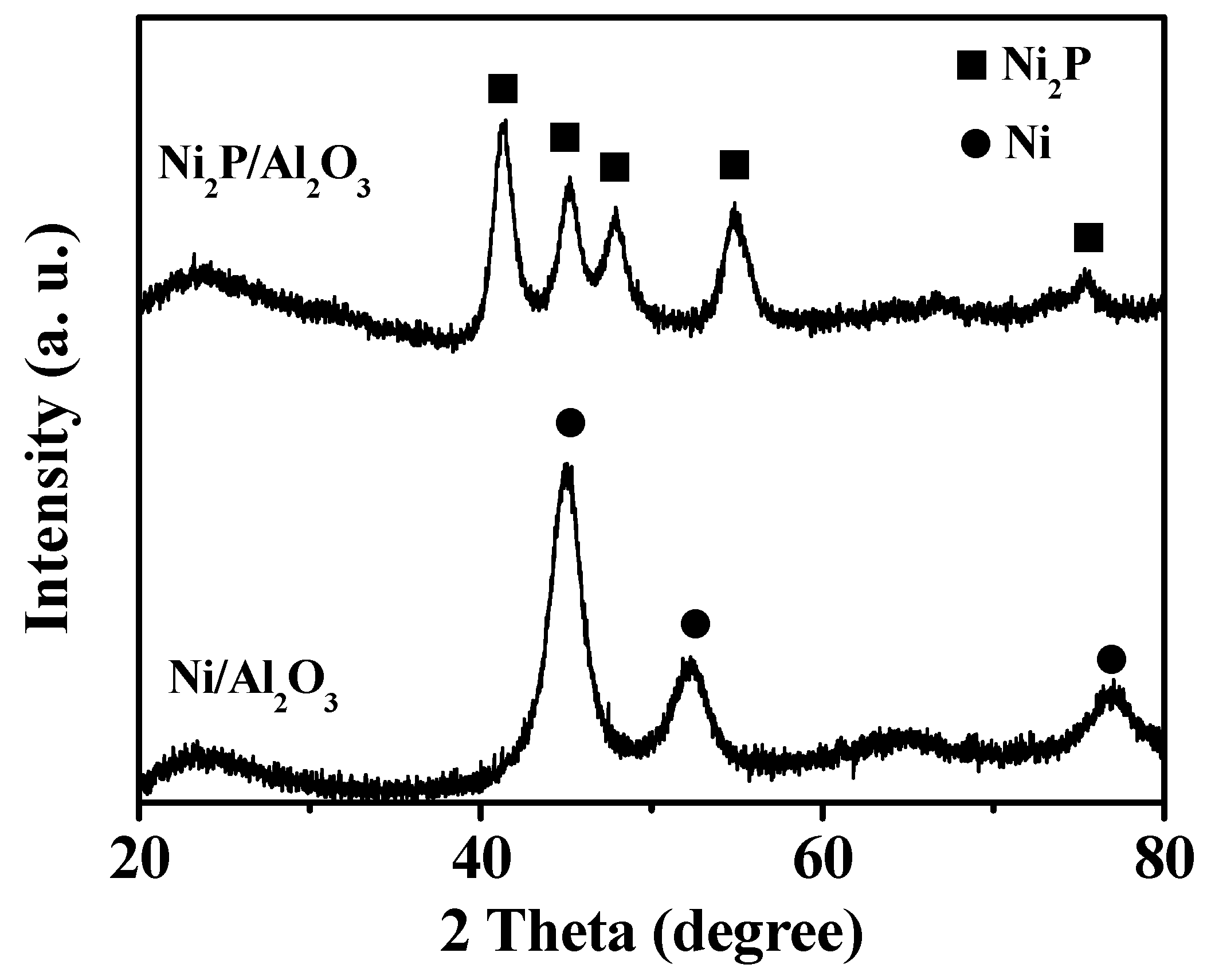
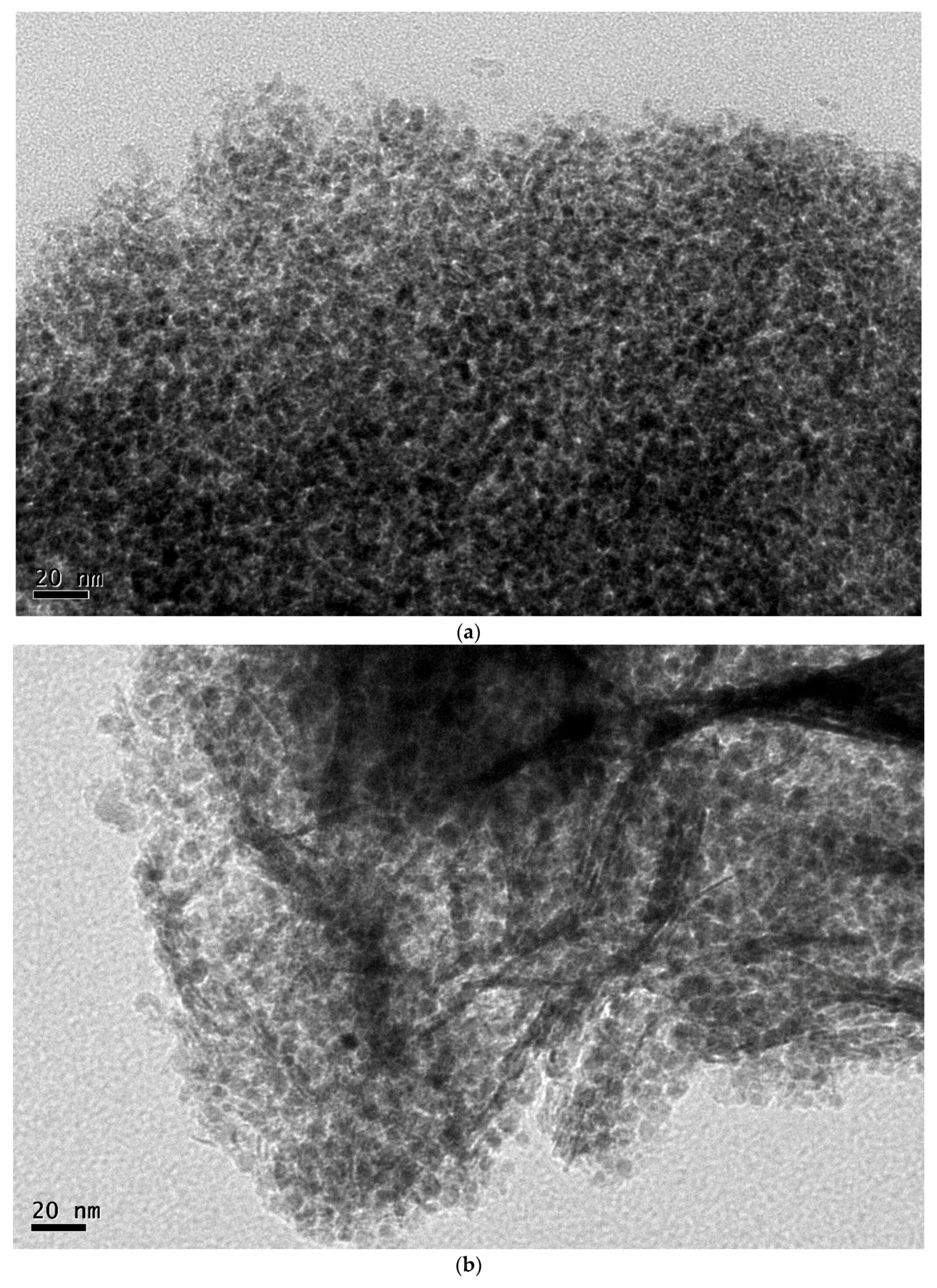
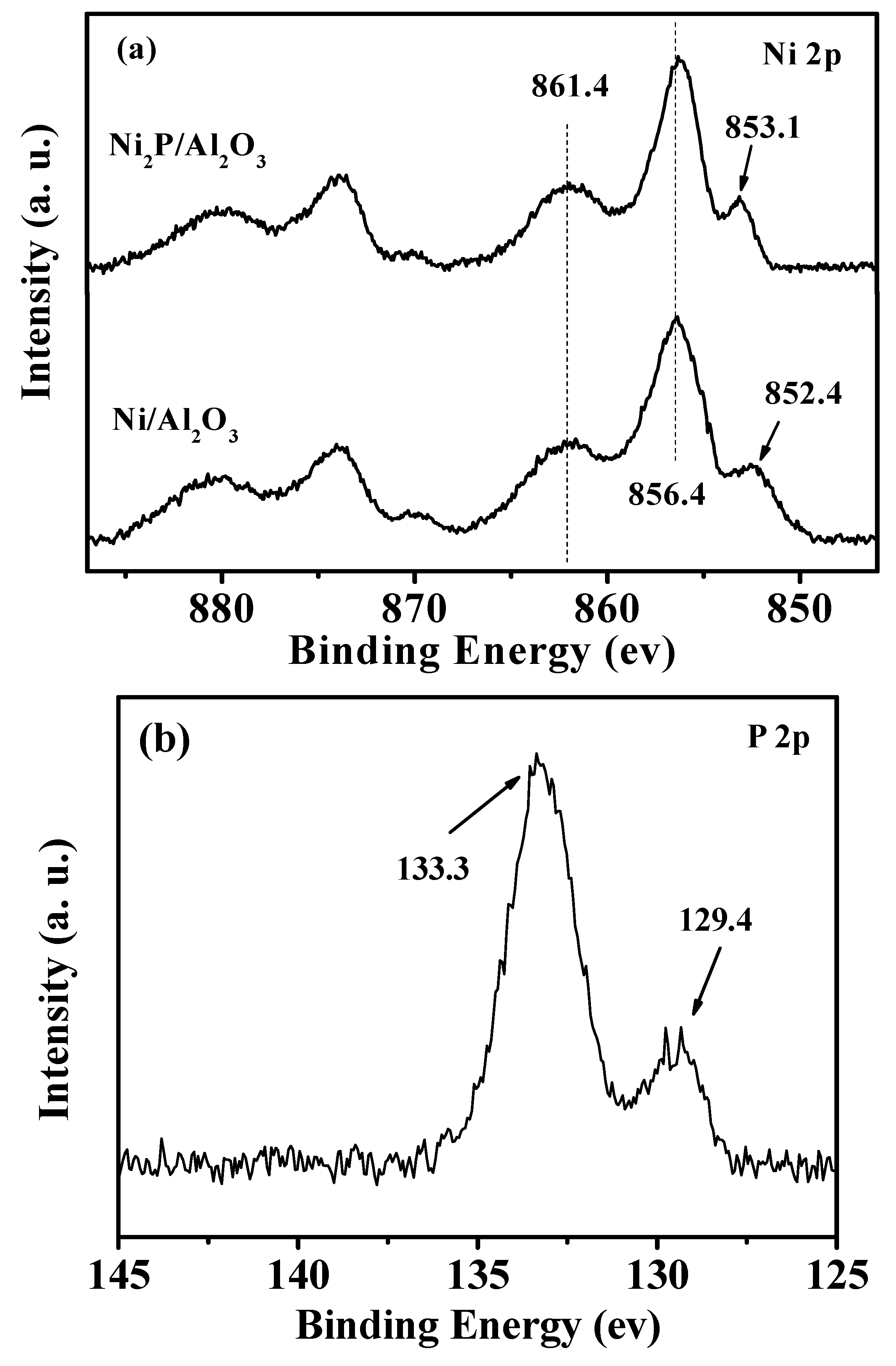
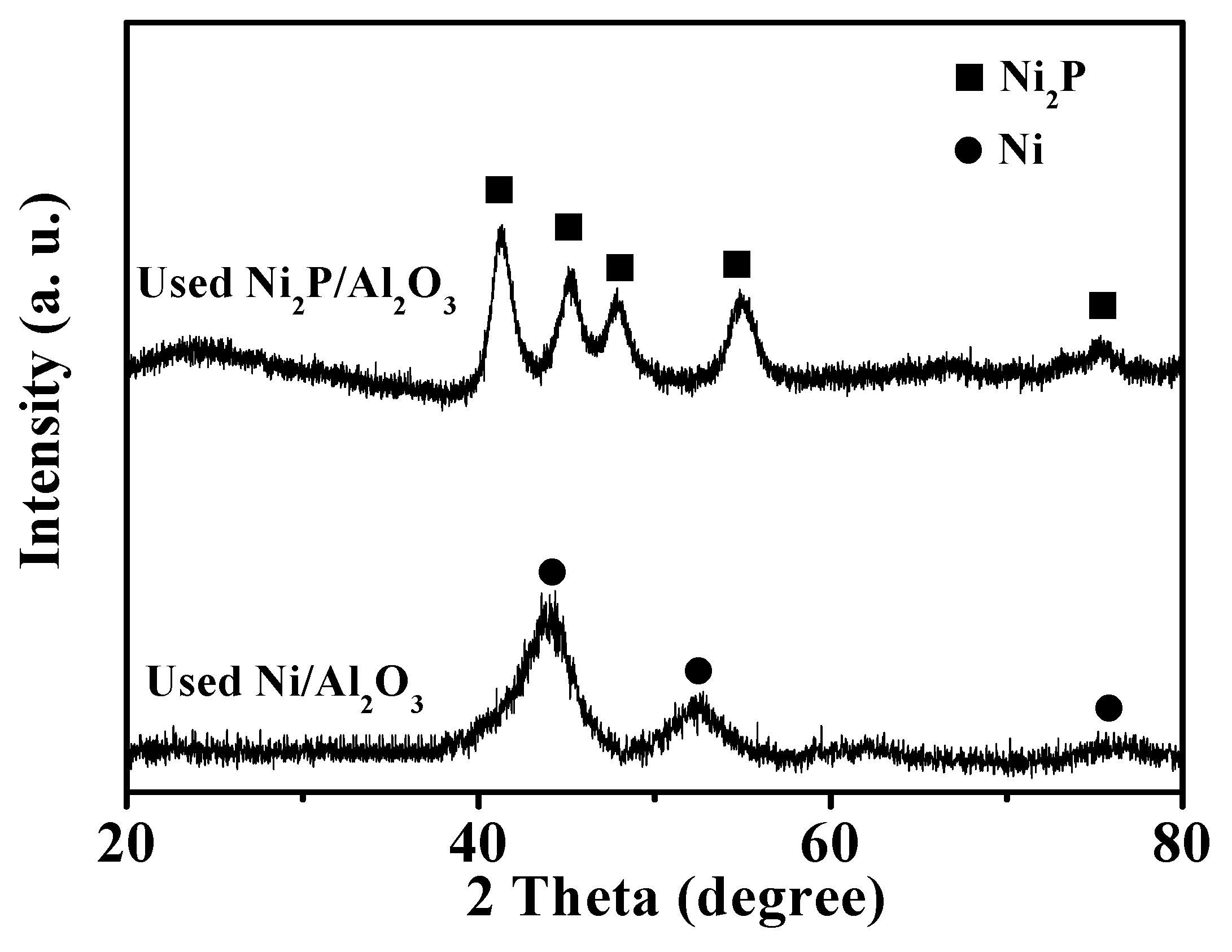
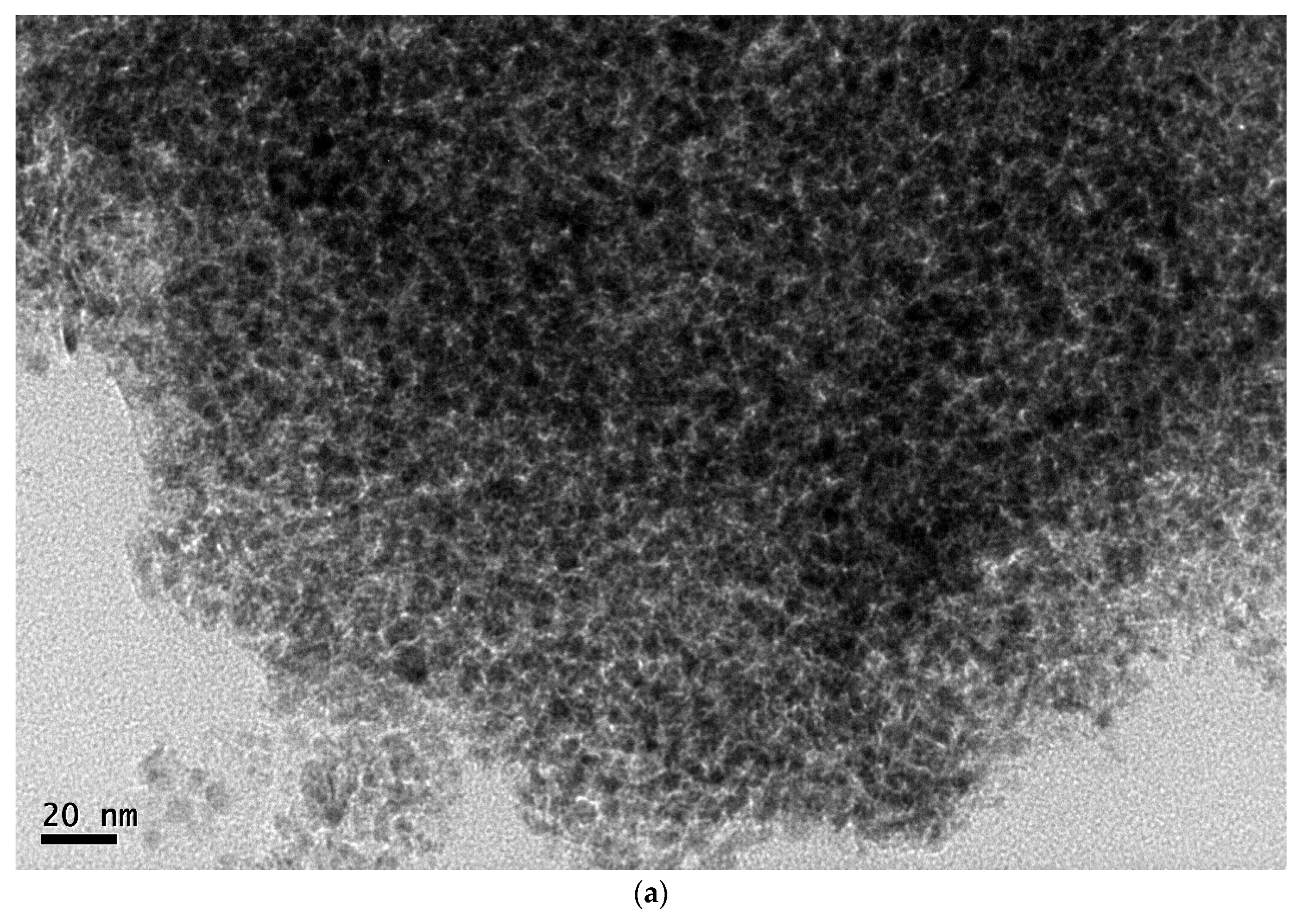
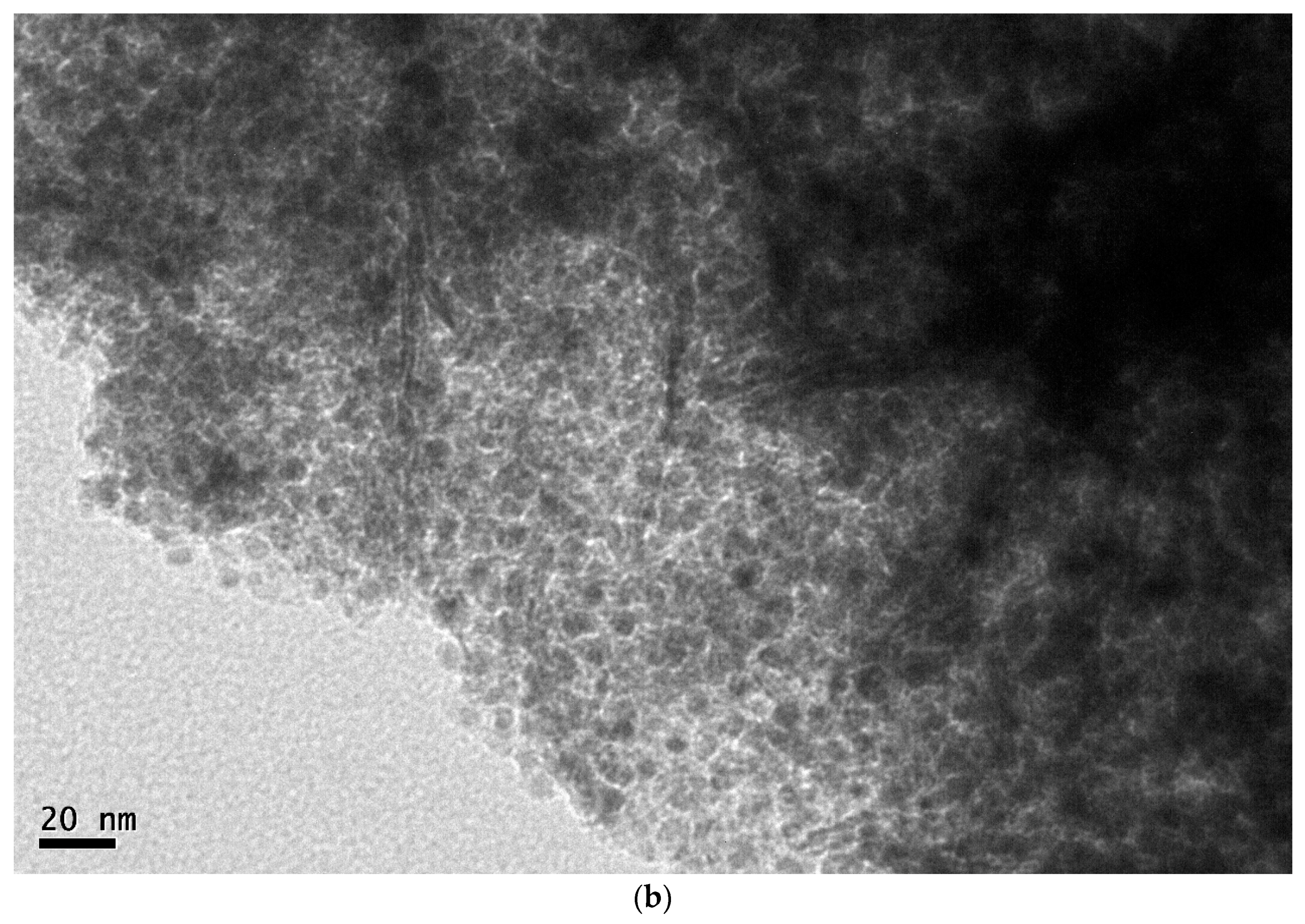
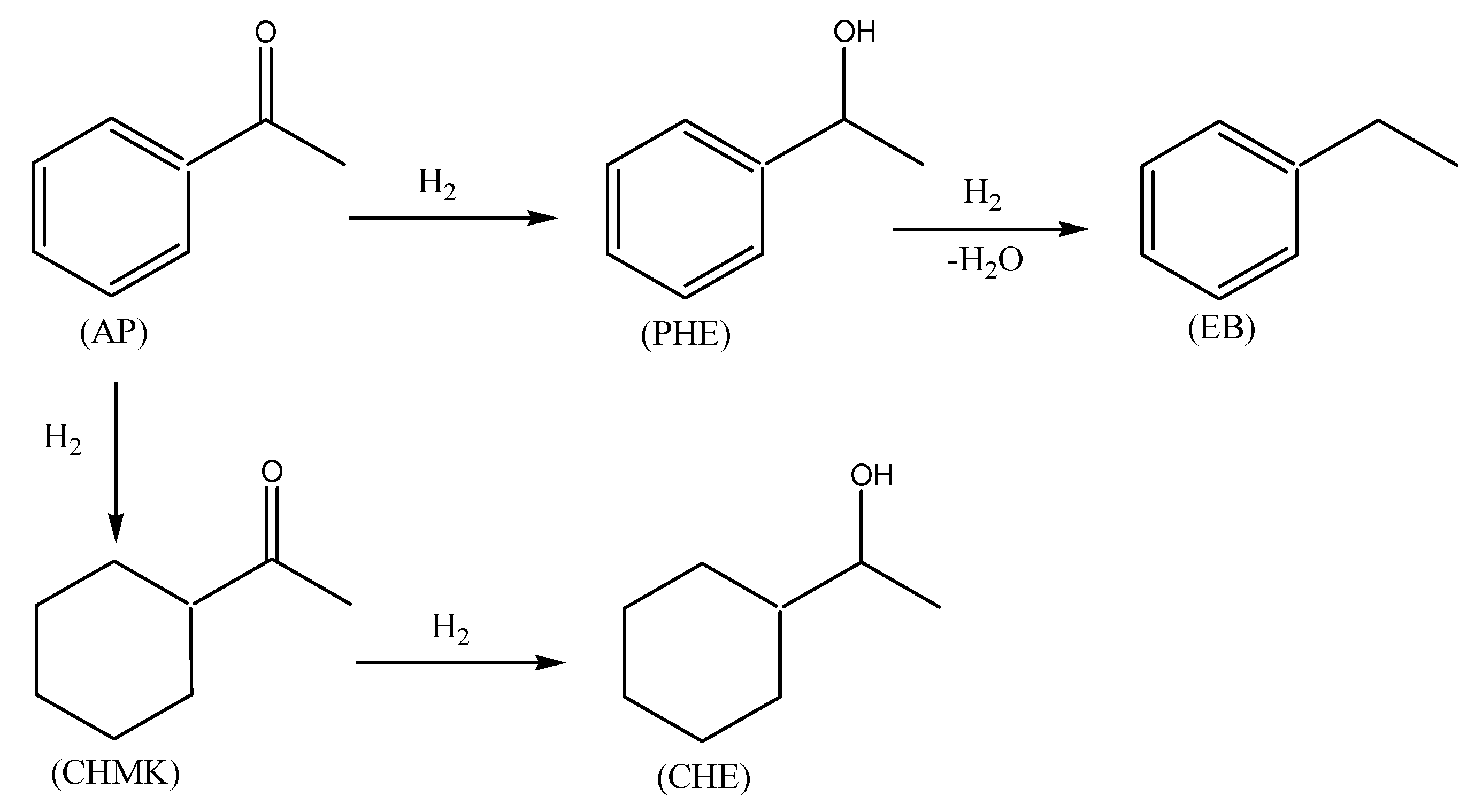
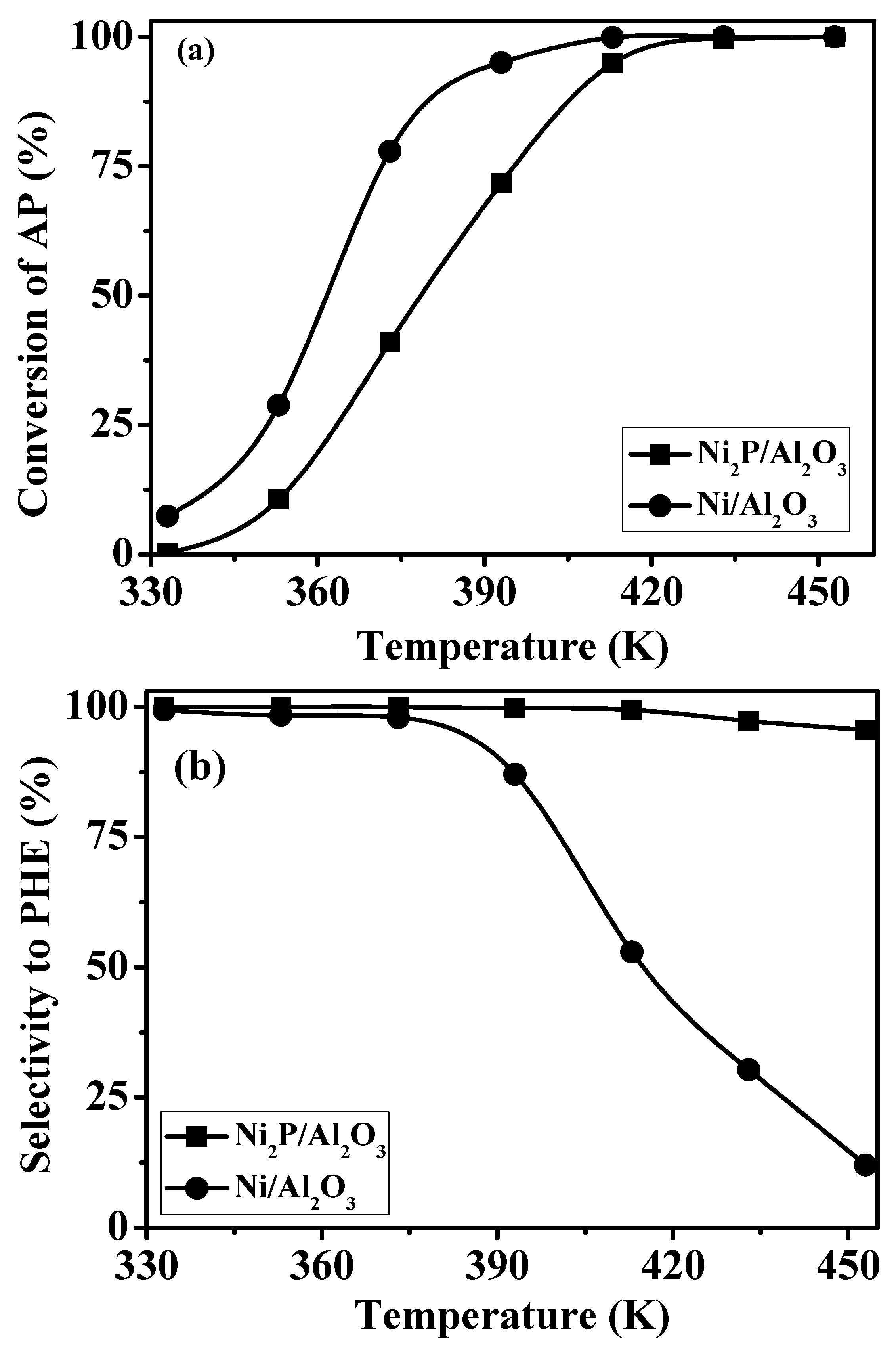

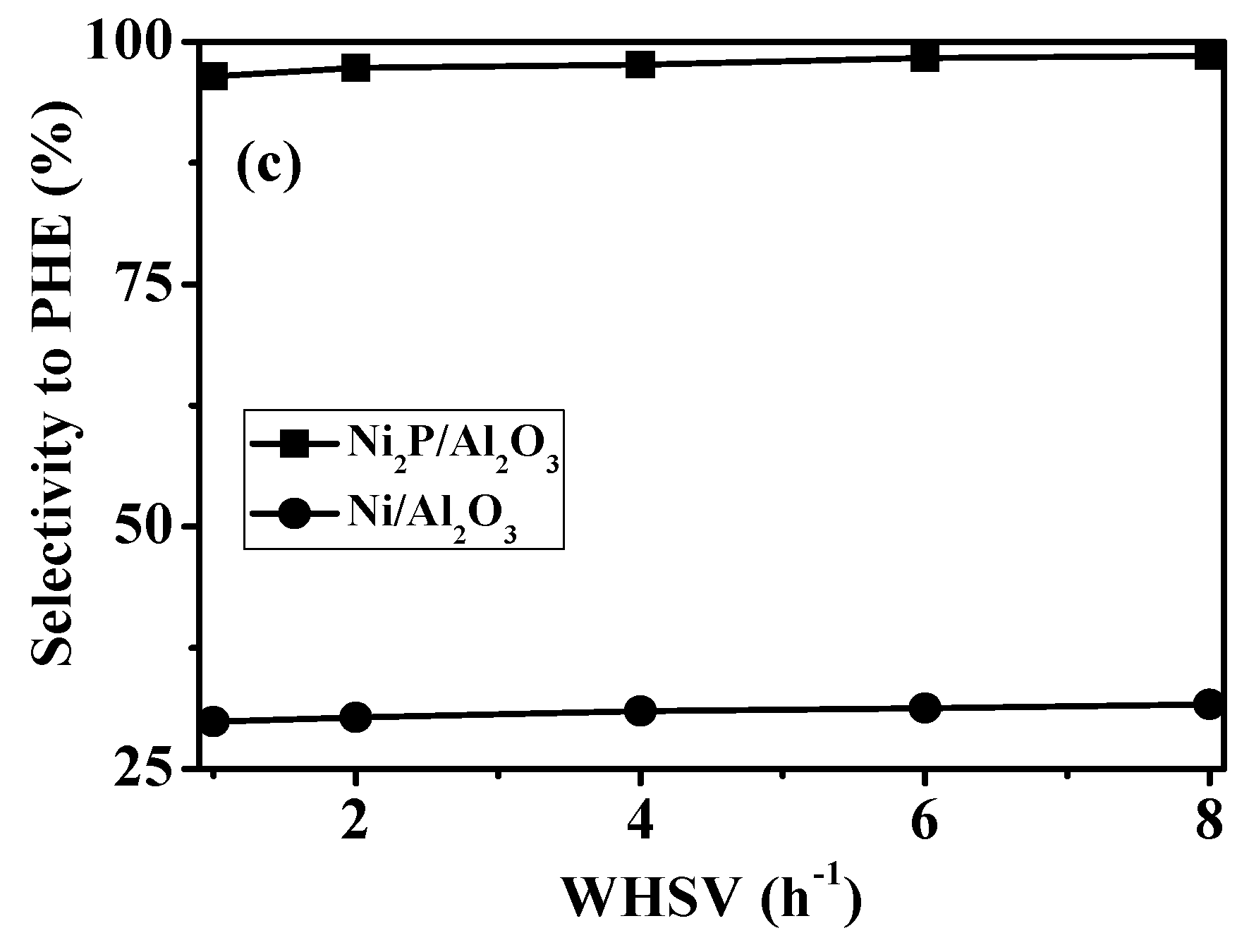
| Catalyst | SBET (m2/g) | Pore Volume (cm3/g) | Pore Size (nm) | D (nm) | |
|---|---|---|---|---|---|
| XRD | TEM | ||||
| Ni/Al2O3 | 258 | 1.69 | 20.5 | 4.2 | 5.8 |
| Ni2P/Al2O3 | 145 | 0.70 | 15.6 | 6.8 | 8.2 |
| Catalyst | Ni (wt.%) | P (wt.%) | Al2O3 (wt.%) | P/Ni (atom) | Uptake (μmol/gcat) | ||
|---|---|---|---|---|---|---|---|
| ICP | XPS | H2 | CO | ||||
| Ni/Al2O3 | 77.9 | - | 22.1 | - | 979 | - | |
| Ni2P/Al2O3 | 60.5 | 19.8 | 19.7 | 0.62 | 0.63 | - | 338 |
© 2018 by the authors. Licensee MDPI, Basel, Switzerland. This article is an open access article distributed under the terms and conditions of the Creative Commons Attribution (CC BY) license (http://creativecommons.org/licenses/by/4.0/).
Share and Cite
Wang, J.; Wang, Y.; Chen, G.; He, Z. Highly Loaded and Dispersed Ni2P/Al2O3 Catalyst with High Selectivity for Hydrogenation of Acetophenone. Catalysts 2018, 8, 309. https://doi.org/10.3390/catal8080309
Wang J, Wang Y, Chen G, He Z. Highly Loaded and Dispersed Ni2P/Al2O3 Catalyst with High Selectivity for Hydrogenation of Acetophenone. Catalysts. 2018; 8(8):309. https://doi.org/10.3390/catal8080309
Chicago/Turabian StyleWang, Junen, Yanling Wang, Gaoli Chen, and Zhanjun He. 2018. "Highly Loaded and Dispersed Ni2P/Al2O3 Catalyst with High Selectivity for Hydrogenation of Acetophenone" Catalysts 8, no. 8: 309. https://doi.org/10.3390/catal8080309
APA StyleWang, J., Wang, Y., Chen, G., & He, Z. (2018). Highly Loaded and Dispersed Ni2P/Al2O3 Catalyst with High Selectivity for Hydrogenation of Acetophenone. Catalysts, 8(8), 309. https://doi.org/10.3390/catal8080309




